Cats, Dogs, Horses, Small Pets, Birds, Poultry & Reptile
(How to Use with Fish is below)
read our cat testimonials & articles for
Whisker Wisdom

10 Cat Anxiety Symptoms-A Basic Guide
10 Cat Anxiety Symptoms
Cats, despite their independent nature, are not immune to anxiety. Like humans, cats can experience stress and anxiety in response to various factors, including changes in their environment, routine disruptions, or traumatic experiences. Understanding the symptoms of cat anxiety is crucial for identifying and addressing these issues promptly. In this guide, we'll explore ten signs and symptoms of cat anxiety and provide insights into how to help your feline friend manage and overcome their anxiety.
Changes in Behavior
One of the most common indicators of cat anxiety is changes in behavior. This can manifest in various ways, such as increased hiding, withdrawal, or aggression. An anxious cat may become more vocal than usual, meowing excessively or exhibiting other vocalizations that signal distress. On the other hand, some cats may become unusually quiet and reclusive when anxious.
Litter Box Issues
Anxiety can also affect a cat's litter box habits. A stressed or anxious cat may start urinating or defecating outside the litter box, even if it has been reliably using it before. This behavior can be a sign of anxiety-related territorial marking or a response to feeling unsafe or threatened in its environment.
Excessive Grooming or Self-mutilation
Cats may engage in excessive grooming as a coping mechanism for anxiety. While grooming is a natural behavior for cats, excessive grooming to the point of causing hair loss, skin irritation, or self-mutilation can indicate underlying stress or anxiety. Pay attention to any bald patches, redness, or sores on your cat's skin, as these may be signs of over-grooming due to anxiety.
Appetite Changes
Anxiety can impact a cat's appetite, leading to either increased or decreased food intake. Some anxious cats may experience a loss of appetite and show little interest in food, while others may turn to overeating or binge-eating as a way to cope with their anxiety. Monitor your cat's eating habits closely and consult your veterinarian if you notice significant changes in appetite.
Aggression or Destructive Behaviors
Cats may exhibit aggression or destructive behavior when they're feeling anxious or stressed. This can include scratching furniture, walls, or doors, as well as biting or scratching people or other pets. An anxious cat may also become territorial and display aggression towards unfamiliar animals or people entering its territory.
Avoidance of Certain Spaces or Activities
Anxious cats may actively avoid certain spaces or activities that they associate with stress or fear. For example, a cat may avoid going into a room where it experienced a traumatic event or encounter. Similarly, it may refuse to engage in activities that it previously enjoyed if it now associates them with anxiety-inducing experiences.
Excessive Sleeping or Restlessness
Changes in sleeping patterns can also be a sign of cat anxiety. While some cats may become more lethargic and sleep excessively when anxious, others may exhibit restlessness and have difficulty settling down to sleep. Pay attention to your cat's sleeping habits and look for any deviations from its normal routine.
Vocalization and Attention-seeking Behaviors
Anxious cats may vocalize more frequently than usual, seeking attention or reassurance from their owners. Excessive meowing, whining, or yowling can be a cry for help from an anxious cat. Similarly, an anxious cat may display clingy behavior, following its owner around the house or seeking constant physical contact.
Digestive Issues
Stress and anxiety can have a significant impact on a cat's digestive system, leading to gastrointestinal issues such as diarrhea, constipation, or vomiting. These digestive problems may be exacerbated by changes in diet, routine, or environment, all of which can contribute to a cat's overall sense of anxiety.
Hyper-vigilance or Startle Response
Anxious cats may exhibit hyper-vigilance or an exaggerated startle response to sudden noises or movements. They may become easily startled or appear constantly on edge, scanning their environment for potential threats. This heightened state of alertness can contribute to feelings of anxiety and unease in cats.
In conclusion, understanding the symptoms of cat anxiety is paramount for providing appropriate care and support to your beloved feline companion. Cats, like humans, can experience a range of emotional responses to various stressors in their environment, and recognizing these signs is essential for addressing their needs effectively.
From changes in behavior and litter box issues to excessive grooming and appetite changes, the symptoms of cat anxiety manifest in diverse ways. By paying close attention to your cat's behavior and being attuned to any deviations from their usual patterns, you can identify signs of stress and anxiety early on.
It's crucial to remember that every cat is unique, and their responses to stressors may vary. Some cats may become more withdrawn and reclusive when anxious, while others may exhibit more vocal or attention-seeking behaviors. Additionally, certain cats may be more prone to physical manifestations of anxiety, such as gastrointestinal issues or excessive grooming.
By recognizing cat anxiety symptoms you can stay in-tune with your cat's emotional health.


before-and-after videos


Before and After Videos
Purr-fect Serenity: Before and After Cat Videos
Magical Before & After videos!
How to Tame a Feral Cat
Supported by Calm Animal Solutions Custom Goal Statement
Take a look at the affection-seeking interactions!
before
3-weeks after


TESTIMONIALS


TESTIMONIALS


TESTIMONIALS
cat chronicles
New Kitten Tolerated by Older cats
Mother cat kinder to grown daughter cat
cats playing again after loss of main caretaker
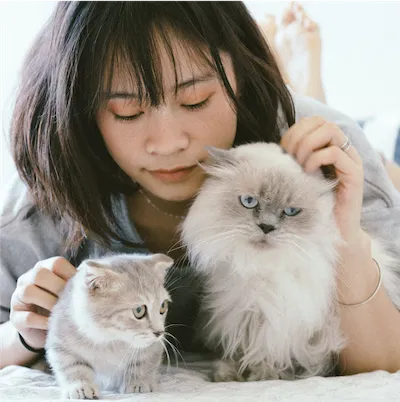
GOAL:
Harmony Amongst the Cats
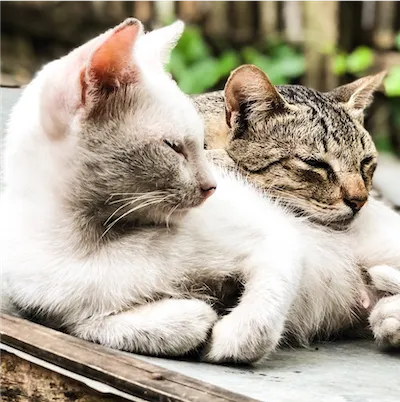
GOAL:
Kinder Cat Interactions
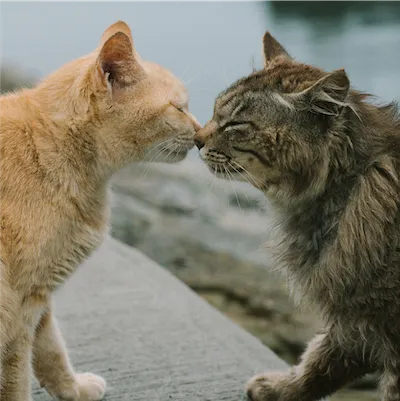
GOAL:
Enjoy Life Again
I had to put my kitten in a separate room when I left the house because the older cats hiss and bat at her.
Two days later:
I felt comfortable leaving the kitten with the older cats when I ran an errand. When I returned they were all sitting peacefully on the same bed!
— SN
Louisa was a great mom to Florence when she was a kitten, but became hostile towards her as she grew older.
One week later:
I noticed Louisa allowing Florence to sit closer to her on the window ledge, as they watched the birds.
Two weeks later:
Louisa and Florence are taking turns grooming each other!
— FP
After my partner passed from an illness, our cats became skittish and hid under different beds.
Three days later:
The cats are rambunctious and playing with each other again. They seem so happy to be around each other.
— HT
new kitten tolerated by older cats

GOAL:
Harmony Amongst the Cats
I have to put my kitten in a separate room when I leave the house because the older cats hiss and bat at her.
Two days later:
I felt comfortable leaving the kitten with the older cats when I ran an errand. When I returned they were all sitting peacefully on the same bed!
— SN
Mother cat kinder to grown daughter cat

GOAL:
Kinder Cat Interactions
Louisa was a great mom to Florence when she was a kitten, but became hostile towards her as she grew older.
One week later:
I noticed Louisa allowing Florence to sit closer to her on the window ledge, as they watched the birds.
Two weeks later:
Louisa and Florence are taking turns grooming each other!
— FP
cats playing again after loss of main caretaker

GOAL:
Enjoy Life Again
After my partner passed from an illness, our cats became skittish and hid under different beds.
Three days later:
The cats are rambunctious and playing with each other again. They seem so happy to be around each other.
— HT
A Trained Animal Communicator Connects with Your Pet
With every order, a trained animal communicator connects with your pet to choose the right blend of flower essences
(e.g. Bach Flower Essences) for calming their anxiety. Custom blended flower essences are natural pet calming products.



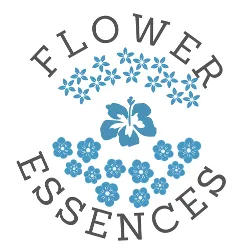
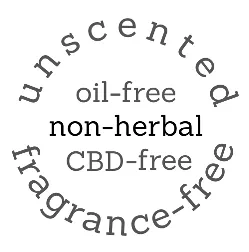

Calm Animal Solutions
Calm Animal Solutions offers customized, natural remedies for dog anxiety, and are calming for cats. Plus, we create blends for horses, small animal pets, birds, poultry, reptiles, and fish.
©2024, Catherine Winfree. All rights reserved.
Mandatory FDA Notice: The statements made regarding Calm Animal Solutions have not been evaluated by the Food and Drug Administration. These products are not intended to diagnose, treat, cure, or prevent any animal disease. Although the ingredients in Calm Animal Solutions are generally regarded as safe, you are encouraged to consult your veterinary before using any essence product (such as Bach Flower Essences, for example).
A Trained Animal Communicator Connects with Your Pet
With every order, a trained animal communicator connects with your pet to choose the right blend of flower essences (e.g. Bach Flower Essences) for calming their anxiety. Custom blended flower essences are natural pet calming products.





Mandatory FDA Notice: The statements made regarding Calm Animal Solutions have not been evaluated by the Food and Drug Administration. These products are not intended to diagnose, treat, cure, or prevent any animal disease. Although the ingredients in Calm Animal Solutions are generally regarded as safe, you are encouraged to consult your veterinary before using any essence product.

Home | Contact | Terms | Privacy Policy | About Catherine
©2024, Catherine Winfree. All rights reserved.


